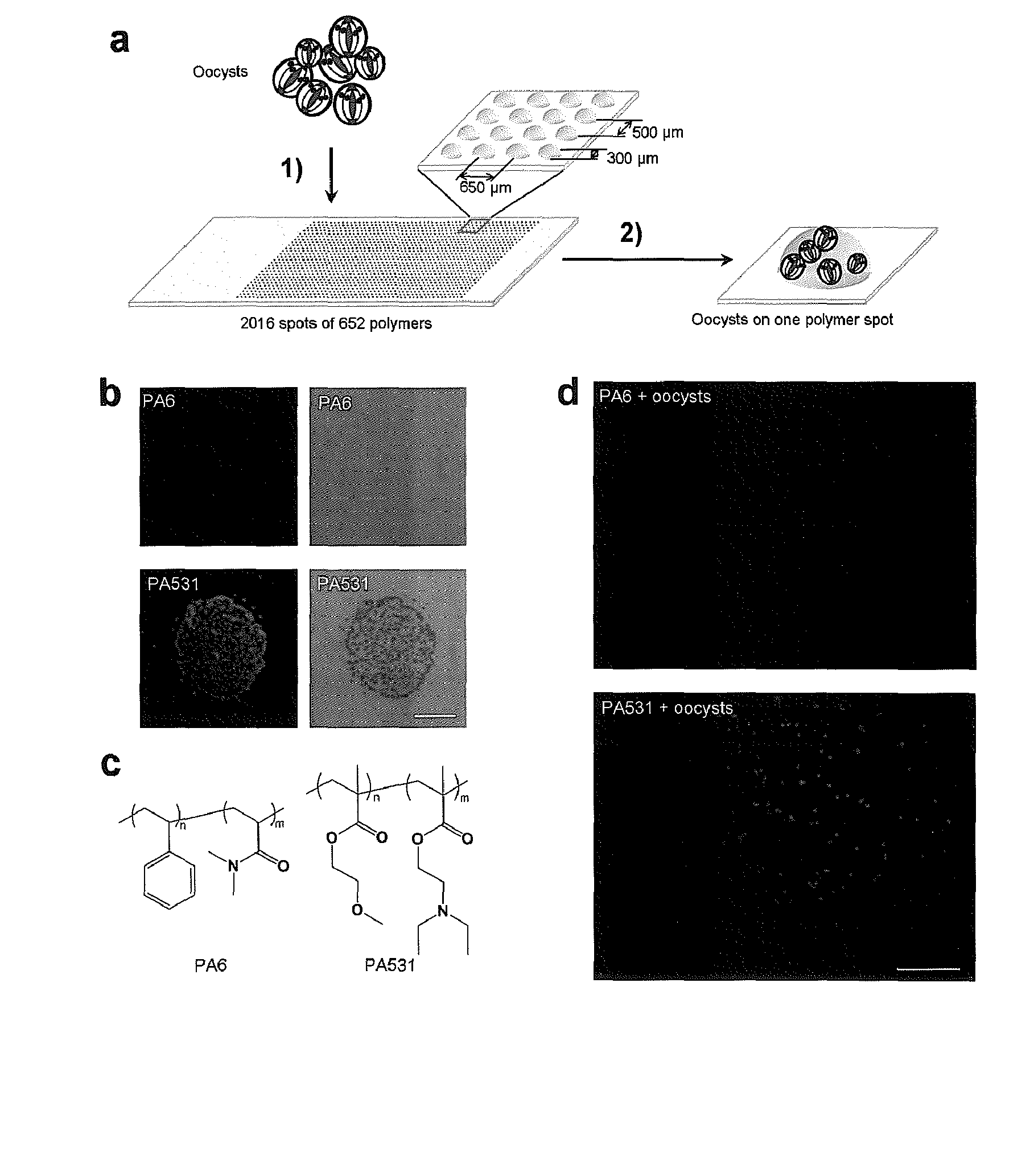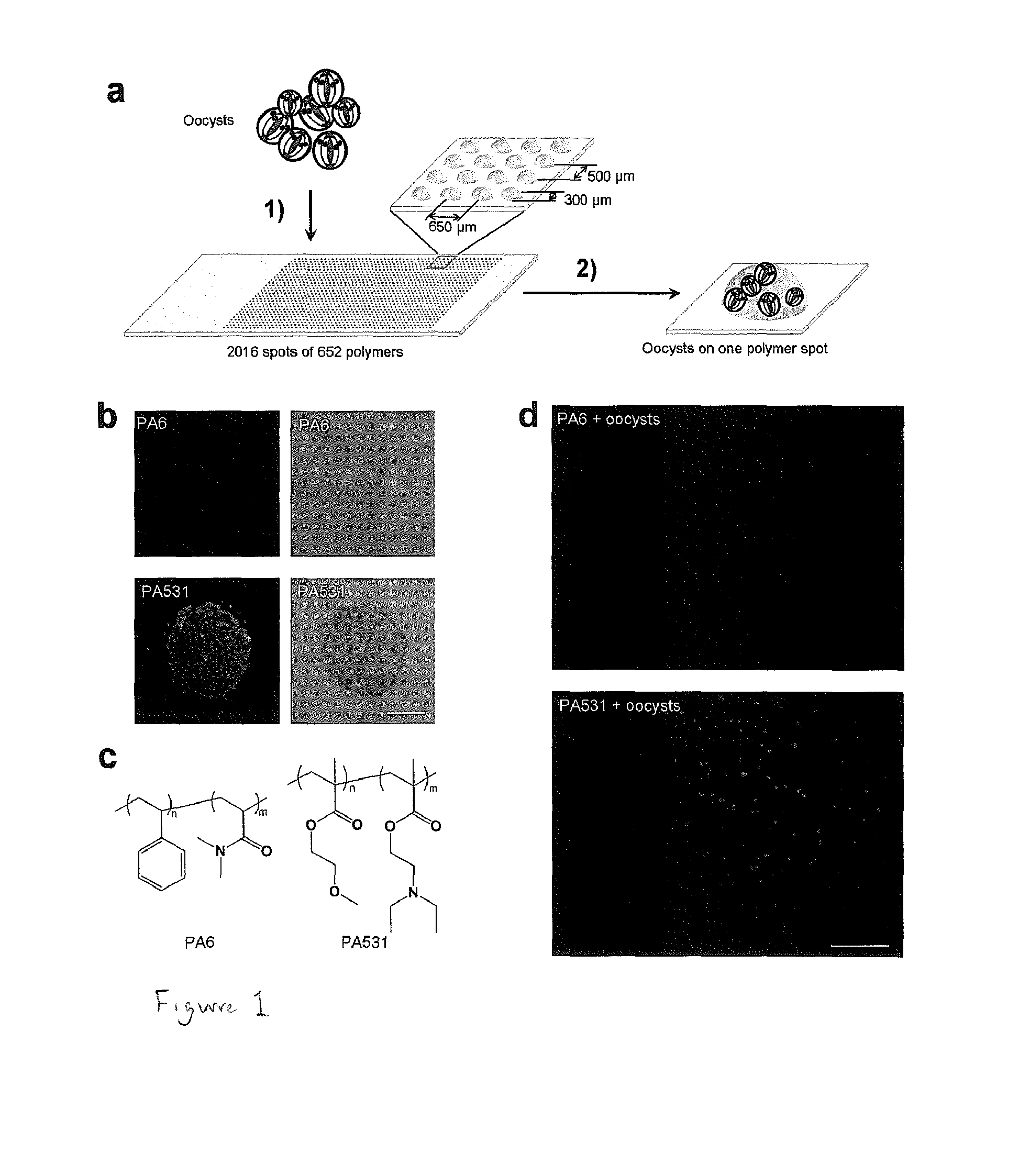Water Treatment and Monitoring
a technology for water treatment and monitoring, applied in water/sewage treatment by ion exchange, library member identification, chemical/physical processes, etc., can solve the problems of low recovery rate, inability to provide information on species, etc., to facilitate the monitoring of water.
- Summary
- Abstract
- Description
- Claims
- Application Information
AI Technical Summary
Benefits of technology
Problems solved by technology
Method used
Image
Examples
Embodiment Construction
[0049]The present invention will now be further described by way of example and with reference to the figures which show:
[0050]FIG. 1. Array screening for Cryptosporidium (in this case with the species C. parvum) oocyst binding. (a). Oocysts (1 million) were incubated for 3 hrs on the polymer microarray. Adhesion to the polymers was analysed by high-content imaging (n=3). (b) Images of the polymer features binding viable C. parvum with oocysts stained with Crypto-a-glo (green fluorescence), and DAPI (blue fluorescence). Fluorescent (left) and phase contrast (right) images of one polymer feature selected from a poor binding polymer (PA6) and a strongly binding polymer (PA 531). (c) Chemical structures for the two polymers. d) Viable oocysts on the polymer surface of PA6 and PA531 coated coverslips. Scale bars are 100 μm in (b) and (d).
[0051]FIG. 2. Results of the viable C. parvum oocysts initial polymer microarray screen (normalised as a percentage of the total oocyst count). The gra...
PUM
| Property | Measurement | Unit |
|---|---|---|
| Fraction | aaaaa | aaaaa |
| Fraction | aaaaa | aaaaa |
| Fraction | aaaaa | aaaaa |
Abstract
Description
Claims
Application Information
 Login to View More
Login to View More - R&D
- Intellectual Property
- Life Sciences
- Materials
- Tech Scout
- Unparalleled Data Quality
- Higher Quality Content
- 60% Fewer Hallucinations
Browse by: Latest US Patents, China's latest patents, Technical Efficacy Thesaurus, Application Domain, Technology Topic, Popular Technical Reports.
© 2025 PatSnap. All rights reserved.Legal|Privacy policy|Modern Slavery Act Transparency Statement|Sitemap|About US| Contact US: help@patsnap.com



